Belgium Basics: Fun Facts About History, People, Culture, and More!

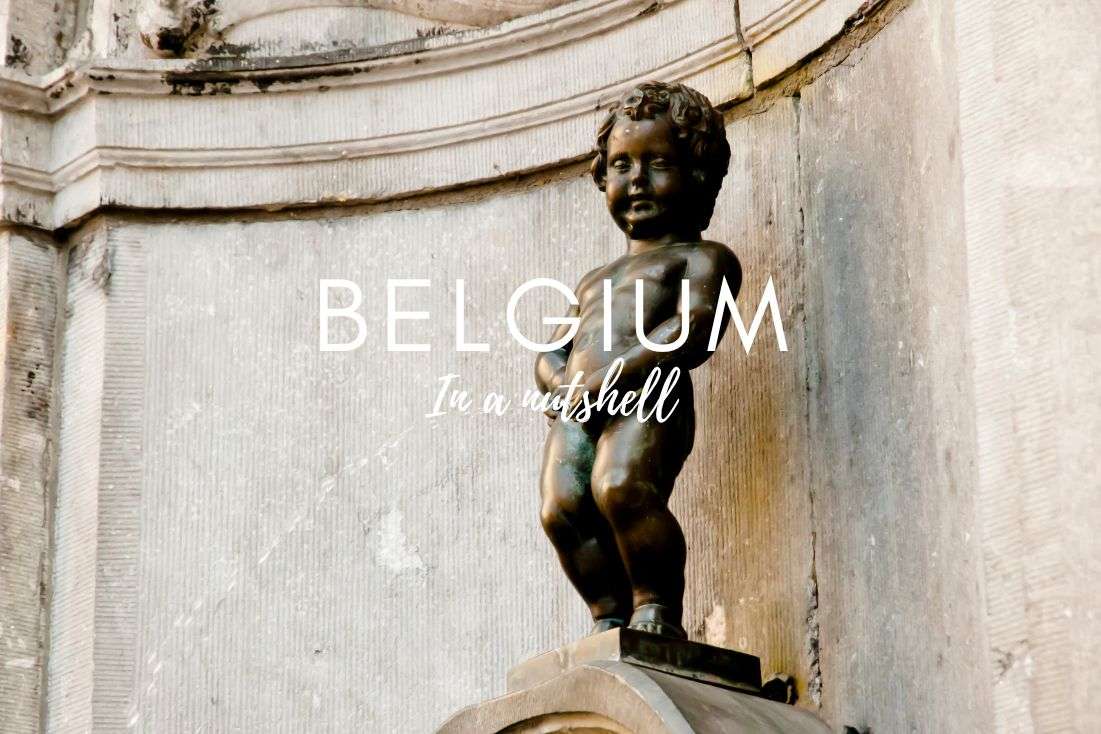
Are you going to Belgium? Do you want to travel smart and not like a clueless tourist? Good thing you found this article then! We’ll take you through the basics of Belgium, from its tumultuous history and peculiar linguistic divide to Belgium’s weather and some useful emergency contacts.
You might also be interested in reading:
- Belgium Itinerary: 7 Days in the Heart of Europe!
- Belgium Travel Tips: 19 Things That Will Make Your Trip Easier
- The Top 15 Museums in Belgium: From Comics to Beer
- Our 9 Top Restaurants in Belgium
- 7 Best Day Trips from Brussels (Includes Train Details)
Belgium Government and Politics
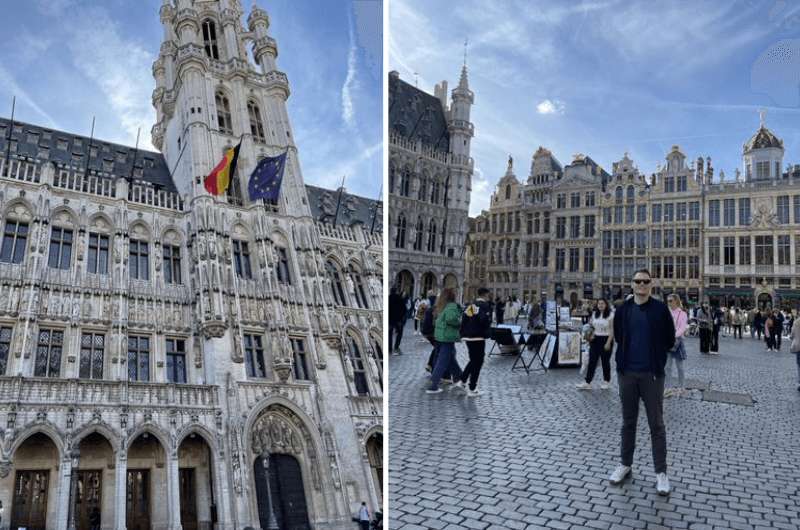
The Grand Place is the main square in Brussels and I thought it was amazingly grand. Everything is gold and important-looking.
The Kingdom of Belgium is a federal constitutional monarchy with a parliamentary system. The monarchy part is headed by King Philippe while the parliamentary part is currently lead by Prime Minister Alexander De Croo. The federal government is based in the capital city of Brussels.
Side note on where to stay in Belgium: We think you should sleep in Brussels and make day trips out of there. If you’re up for it, you can even go to Paris or Luxembourg. Read how and for how much in our day trips from Brussels guide. Also, if you book a hotel in Belgium (or anywhere else) through our booking.com affiliate links, we’ll get a small (like, really small) commission at no extra cost to you. Thank you so much! We’ve sprinkled hotel tips throughout this article.
Belgium is officially split into three parts in two different ways: by language and by region.
There is the Dutch-speaking Flemish Community, the French-speaking French Community, and the tiny German-speaking Community. These are based on language and not by geography, though members of the language communities do largely reside in the respective regions. Confusing, I know. The language communities determine the official language that is used in the included municipalities.
The regions I speak of are the Flemish Region (also called Flanders), the Walloon Region, and the Brussels-Capital Region. This makes things a little difficult, since there is no official region for the Germans, who have been effectively sucked into the Walloon Region, but have their own government there.
Brussels, on the other hand, is part of both the Flemish and French Communities, and is officially bilingual. French is, however, is the language spoken by the overwhelming majority of its citizens.
The Flemish Parliament (which governs both the Flemish Region and the Flemish Community) and the Parliament of the French Community both have their seat in Brussels and are always fighting for Brussels’ ownership. Not officially, but it’s a whole thing – Brussels is mostly French-speaking but it’s an enclave in Flanders, so emotions can go flying all over the place.
EU institutions in Brussels
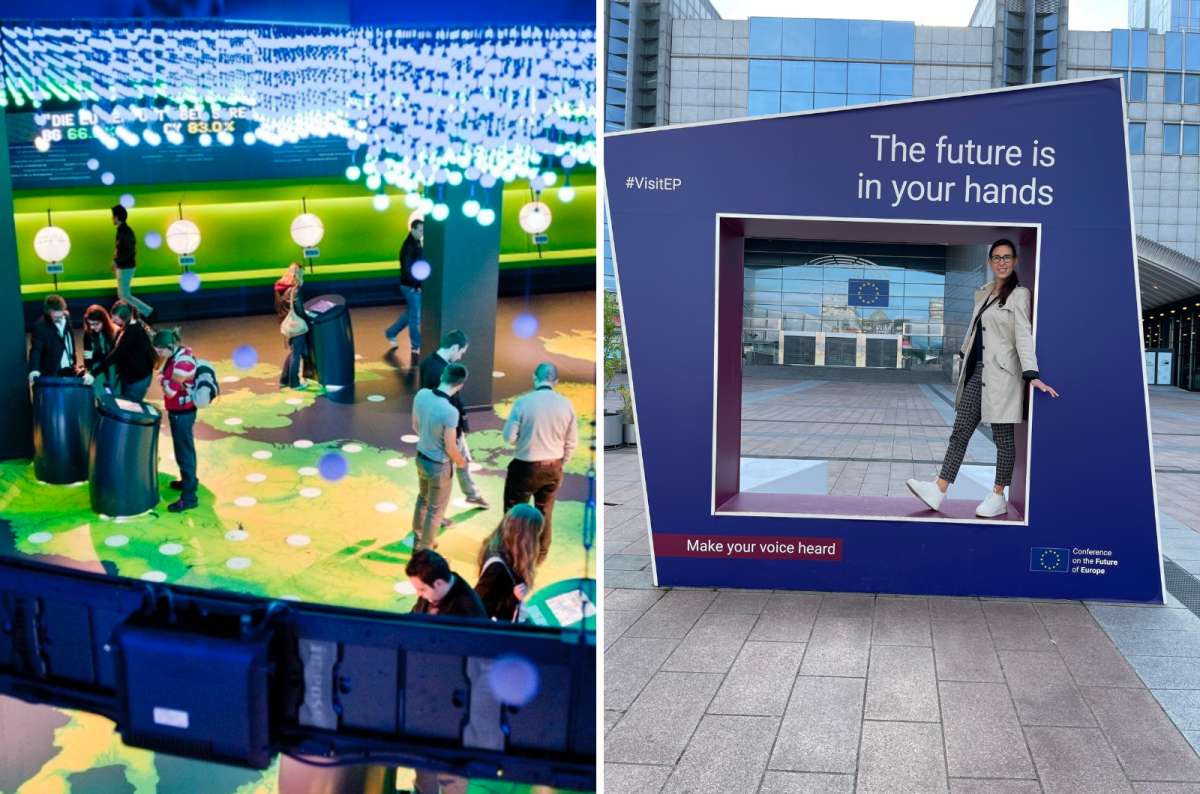
The visitors’ center at the European Parliament is called Parlamentarium. We loved it!
The capital of Belgium, Brussels, is also the de facto capital of the European Union. De facto because it isn’t officially the capital, as there is none, but its where all the important meetings happen.
EU institutions that have their seats in Brussels are the European Commission, Council of the European Union, European Council, and one of the seats of the European Parliament. Strasbourg in France is officially the main one, but who are they trying to kid.
The reason the Brussels was chosen to be this important is supposedly because it is halfway between Germany and France, who have always been fighting each other and when they finally reached a reconciliation, the EU was able to be established.
We won’t stop recommending the cool and comfortable Radisson Red in Brussels until you try it for yourself!
The visitor’s center of the EU Parliament, the Parlamentarium, is one of our favorite museums in Belgium and definitely something you need to do while in Brussels. Coincidently, our favorite hotel, Radisson Red is almost right next to it.
Belgium’s Flag
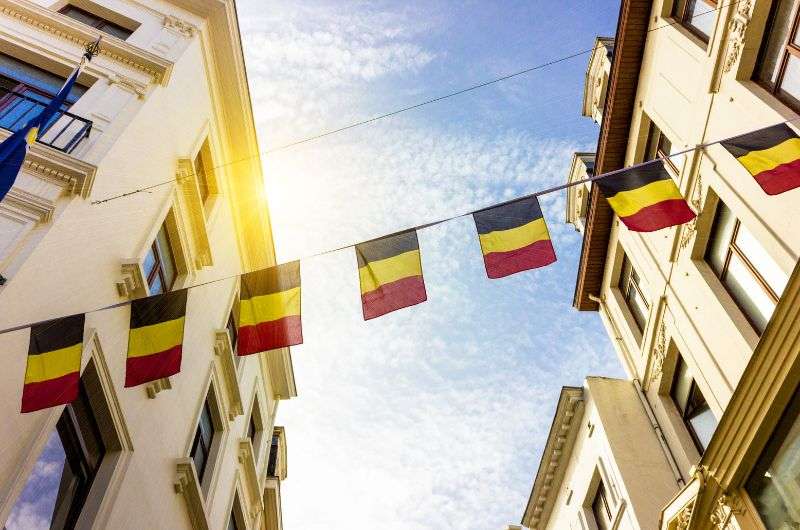
The Belgian flag(s)
The black, yellow and red on the flag of Belgium came from the colors of the flag of the Duchy of Brabant, which shows a yellow lion with red claws on a black background.
Belgium’s own Constitution is very vague on the appearance of its flag and only mentions that “The Belgian nation chooses for its colors red, yellow, and black.” But in what order? In which direction?! We need clarification!
The lack of proper flag instructions has caused the Belgian flag to have horizontal stripes with different ordered colors in the past, sometimes causing confusion as to which country the flag belongs to. Not the best thing to be confusing in, say, times of war.
Even though you’ll probably see the Belgian flag flown at the more traditional flag proportions of 2:3 on most public buildings, the official proportions are actually 13:15, making the flag almost a square but not quite. You’ll notice the short and stout version of the flag on royal palaces (like the Royal Palace of Brussels).
Fun fact: The yellow on the Belgian flag is, in fact, yellow, unlike the yellow on the similarly-colored German flag, which is actually gold.
Belgium Geography
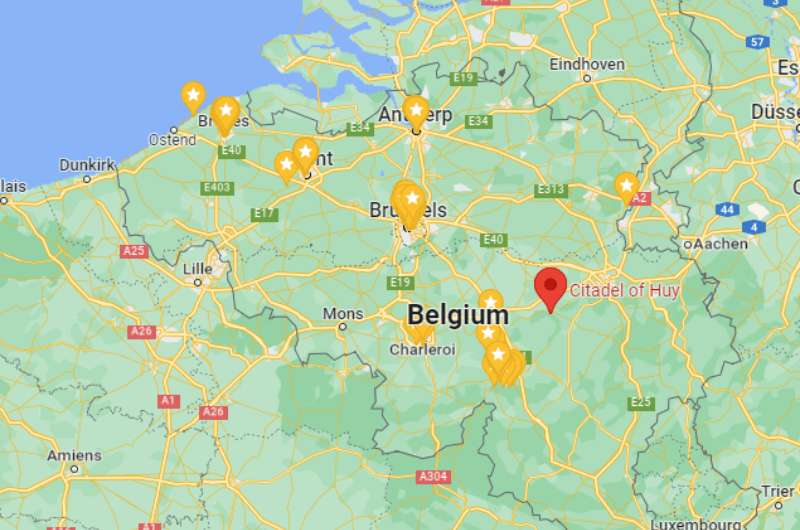
A map of Belgium showing the top places to visit
Belgium is a small country in northwest Europe, mashed between the Netherlands, Germany, France and Luxembourg, with the Northern Sea creating 67 km (42 miles) of beaches in the north of the country (and the precipitation and fog that comes with it, see the Belgium Weather section below.)
I say it’s a small country because most others in Europe are larger. But it depends who you ask: Belgium is smaller than Denmark and the Netherlands, a bit bigger than Switzerland and Slovenia, and way bigger than itty bitty Luxemburg. For comparison, it’s 22x smaller than Texas. They say everything is bigger in Texas—they probably have shopping malls the size of Belgium there.
If you want numbers, Belgium is 280 km (175 miles) long and 145 km (90 miles) wide.
Belgium is as flat as an ironing board, bar the 694 m (2,277 ft) mound of Signal de Botrange and some rolling hills that are a poor excuse for an interesting landscape. The cliffs along valley of the Meuse River, most popularly showcased in the town of Dinant, are as dramatic as it gets in Belgium.
The northern half of Belgium is called Flanders, or Flemish Region, which is Dutch-speaking, and the south is Wallonia, the home of the majority of the French-speaking community. The capital, Brussels, in roughly in the middle of the country.
Belgium Economy
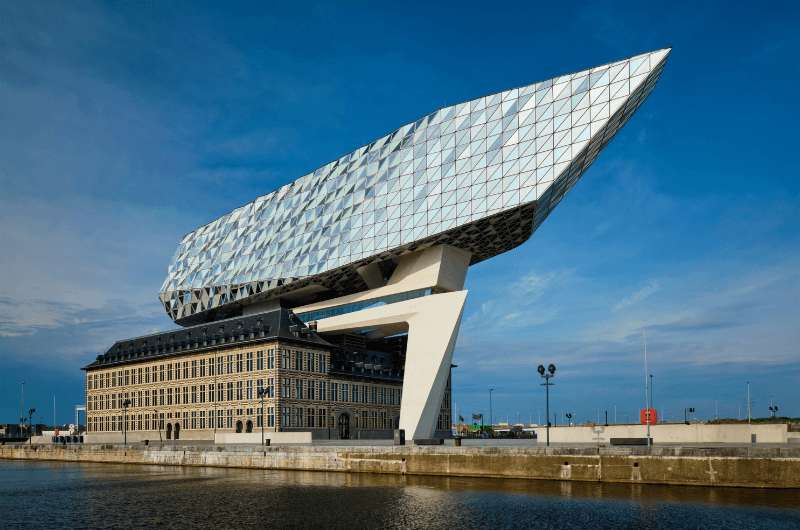
When you’re a rich country, you can afford to put a modern, alien spaceship-like structure on top of a historical building @ Antwerp Port House
Belgium always places in the world’s top 20 economies. Its GDP is expected to reach USD 610 billion by the end of 2022.
Given its strategic, central position, Belgium has developed a great transport network (ports, railways, highways) that allowed it to integrate its industries with its neighbors. Belgium’s multilingual, skilled workers are also a huge trade advantage.
The service sector rakes in the majority of the GDP, though Belgium originally became rich because of its rapid industrialization—it was the first country in continental Europe to undergo an Industrial Revolution. The steel and coal-mining industries were booming from the early 19th century to the mid-20th century, most visibly in Charleroi and surrounding areas in Wallonia. Wallonia was the wealthy part of Belgium.
But once the leading industries were no longer economically viable, or just plain ran out of resources, shit hit the fan.
The government’s repeated attempts to pull the industry sector out of the gutter resulted in a debt of 120% of GDP by the 1980s.
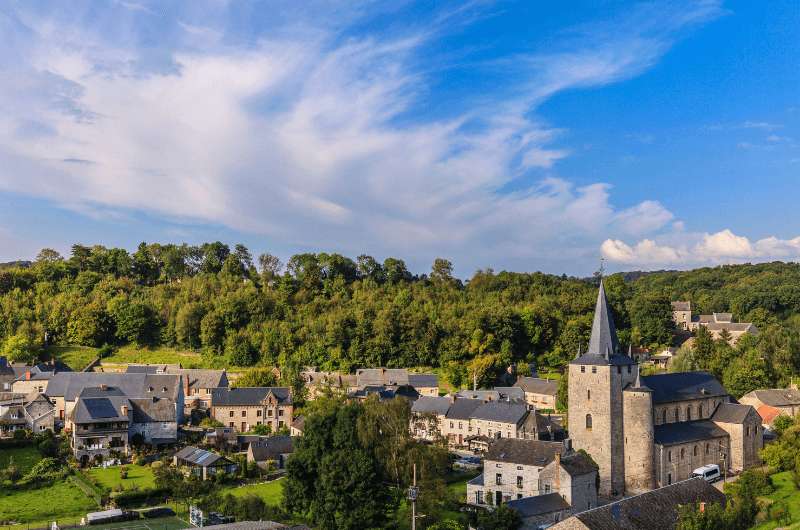
In Wallonia, you’ll find quieter villages, like Celles, and open countryside
Whereas Flanders, previously mostly focused on the textile industry, dusted itself off and rose from its decline rather quickly, Wallonia is, to this day, wallowing in its depression. There is a division between the wealthier north and the poorer south that only adds to the tensions that the language barrier between the two regions brings. Wallonia’s unemployment rate is twice as high as it is in Flanders.
Flanders is now one of the wealthiest regions in Europe and it receives the vast majority of international investments (and all of Wallonia’s spite).
Belgium has a strongly globalized economy and its success largely rises and falls depending on how Europe as a whole is doing.
Belgium Demographics
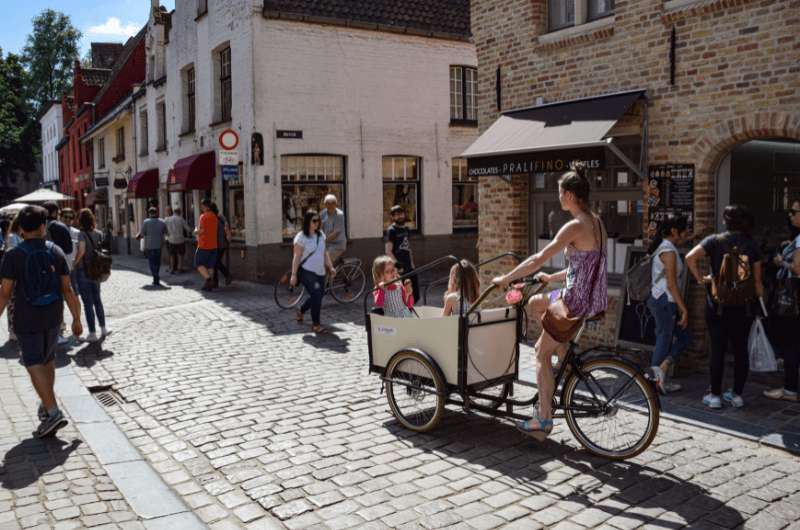
If you want to see a lot of people in Bruges, visit during the day. The crowds leave in the late afternoon, so there is no nightlife to speak of
With 11.5 million people and a population density of 376/km2 (970/sq mi), Belgium is very densely populated—22nd in the world. The northern half more so than the southern half.
About 10% of Belgium’s citizens live in Brussels.
People of foreign background and their descendants make up 25% of the population. About half of them are from other European countries (mostly Italy, France, the Netherlands), the other half from either Morocco, Turkey or Congo.
To me, Belgium was like the United Colors of Benetton. People of all colors living together in what seems like perfect harmony. Unlike what I witnessed in South Africa or even the US, it just seemed to work a lot better in Belgium. Yes, I’m a white guy and no, I don’t care that I’m not supposed to have an opinion on racial issues.
If you want to know more about the people of Belgium, head on over to our Belgium Travel Tips article.
Our top tips for Belgium:
- Belgium’s emergency phone number is 112 for fire and medical emergencies, 100 for the police.
- Because we like you, we put together a list of the top, hand-picked hotels in our articles about Brussels, Bruges and Ghent. We recommend basing yourself in Brussels and taking day trips from there.
- Summer is when it rains the most in Belgium, so consider coming in the spring instead.
Belgium History
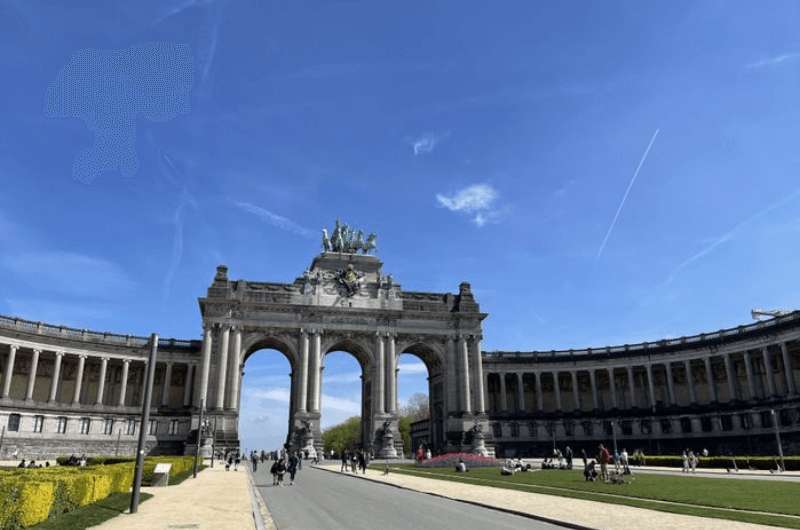
The Triumphal Arch in Brussels, Belgium
Disclaimer: I went a little overboard with the history section, so brace yourself for impact. This is going to be thorough!
There have been tribes living in today’s Belgium since the Neolithic group called the Omalians started farming near Liege. Unlike the Michelsbergs that came a few thousand years later, they had no weapons (or none that we modern folk have found).
The Michelberg people were the first warriors in the area, even operating a quarry and flint mine, and exporting the material to other tribes in far-away places. They were experts at creating tools and weapons.
In 5000 BCE, metal began to be used to produce weapons, and basically the era of Belgians being known as tough cookies to crack started. You don’t mess with a Belgian unless you are prepared to fight!
Before the end of the pre-Christ era, a Celtic people called the Belgae arrived and forced everyone already there into submission.
Somehow, when Julius Caesar swooshed in in 56 BCE, he conquered even these fierce warriors without much trouble. For the next four centuries, what is now Belgium was under Roman rule, though they were left to govern themselves under the watchful eye of Rome.
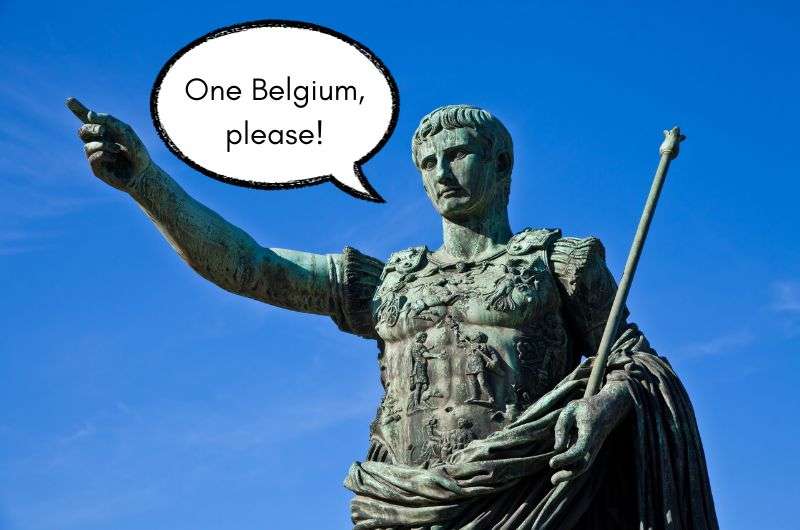
I don’t know how he did it, but Julius Caesar didn’t have much trouble taking over when he arrived in Belgium
The Belgians probably weren’t uber happy to admit it, but thanks to the Romans, they did develop their textile, glass, arms and tools industries (for export to Rome) and scored a great network of roads. This turned Belgium into a crossroads in Europe, which wasn’t bad for business.
In the 5th century, the Franks, who were the Romans’ buddies, took over the region that is today’s Flanders and started speaking something that resembled Dutch, hence starting the Flanders vs. Wallonia never-ending squabble.
Then the Vikings with their longships sailed up and down Belgian rivers and pillaged everything in their way. Belgium then became a wasteland.
Priests were slaughtered, local lords took over church property and became rich. Their egos grew and they rebelled against any attempt to be ruled by kings and counts. It also meant a lot of struggle, revolutions, and disregard to the wellbeing of the general people.
Bla bla bla, famine. More fighting. The plague.
In the 14th century, Duke Philip the Good took matters into his own hands and consolidated the area including today’s Belgium and Holland and this area became the richest in Europe.
Philip’s son then totally screwed things up, halted progress and invited more fighting. Someone from France came over and conquered Burgundy.
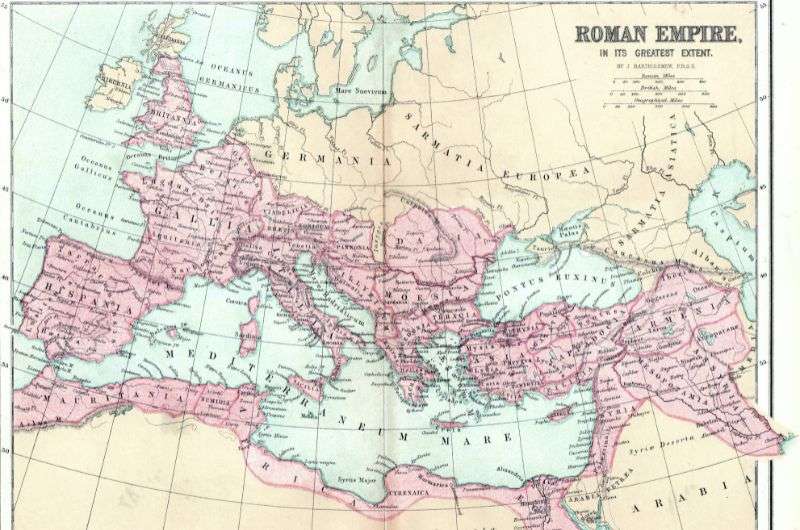
A map of the Roman Empire
The Low Countries (now Netherlands, Belgium, Luxembourg) decided they wanted Germany to protect them and they passed themselves into the hands of the Habsburgs. Flanders still favored France. Civil war ensued.
Then in 1516, a few marriages between important families and their children inheriting large chunks of land later, Charles from the Low Countries was declared Charles V, King of the Spanish Empire. This was to become one of the most powerful empires ever, with one of the most powerful kings ever. The Low Countries were now called the Spanish Lowlands, but Charles’ Empire included everything from Spain, Germany, the Low Lands, parts of Italy and central Europe, and large areas in the Americas.
History repeated itself and once Charles’ offspring (Philip II) took over, everything the father managed build up slowly started falling to shit. Philip basically worked permanently on home office (Spain), meaning he lost touch with the Lowlands, which reinstated fighting in the region.
Bla bla bla, anarchy. Unemployment. Mobs. The solution? Brutal repression. The result? Nothing good. Everyone hated Spain. There was a divide between individual countries because of religion.
The 30-year War decimated Germany and halted trade. The Lowlands turned to agriculture. Other countries turned to colonialism and became madly prosperous. But the Lowlands maintained its autonomy, refusing change.
That was until Empress Maria Therese came along and worked to restore prosperity. How? Through travel! New roads, introduction of a cool and comfy new vehicle (coach) to travel the roads with, and, get this, horse-drawn canal boats that served meals onboard! Now that’s next level travel if I ever heard of it! Everyone who was anyone rushed to the hot new destination of Belgium.
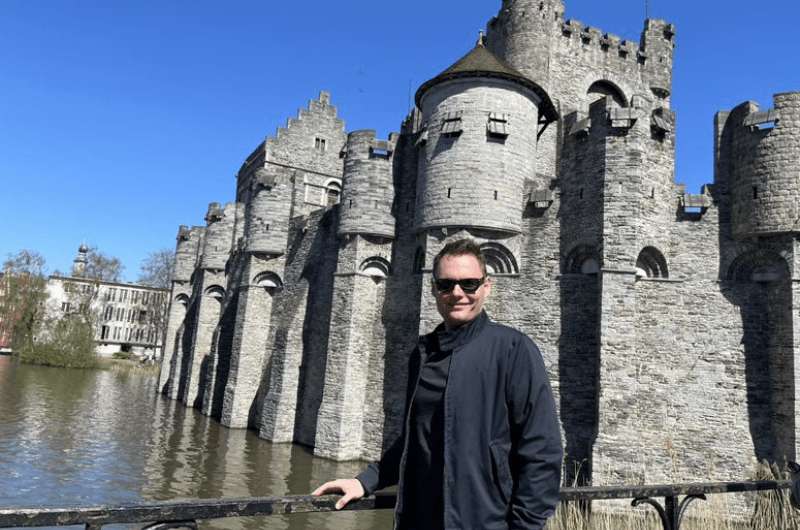
Pretending to be a count at the Gravensteen in Ghent (one of our favorite things to see in Belgium, by the way)
Guess what—then her son took over. Dun dun duuuun… He made many admirable amendments to laws, took away the Church’s power, established districts with new administrators. It all sounded good on paper, but with all the massive change happening overnight, thousands of people ended up suddenly unemployed and even unemployable. Unhappy citizens meant more revolts against the new boss, even if what he was doing was actually good in the long run.
In the end, it was the Belgians themselves who asked for help from France, their long-time enemy, which actually helped bring peace. Belgian refugees in Paris formed the Committee of United Belgians and Liégois at the end of the 18th century, which gave way to the creation of modern Belgium.
After a little back and forth with Austria, France annexed Belgium. They were nice about it, giving Belgians the same rights and freedoms as French citizens. Plus, since the Belgians now had a huge new territory to work with in their trade, their industry exploded (in a good way) and Belgium became a very prosperous part of France.
All good things must come to an end, and so when Napoleon and the Pope broke up, the Belgian Catholics were upset and broke up with France.
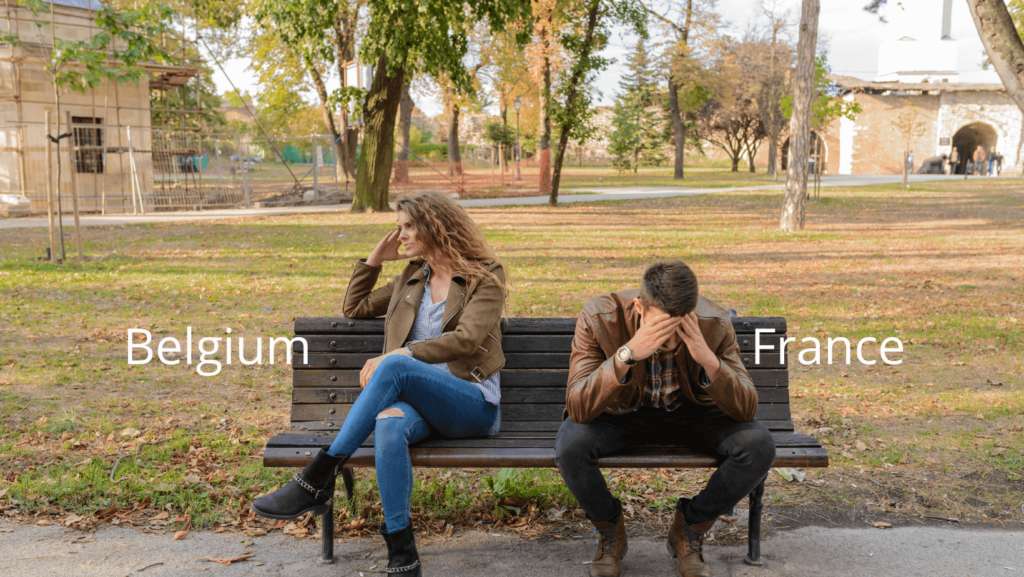
Breakups are tough
When the allies took over, nobody protested (except for Liege in the south of Belgium). Belgium and Netherlands were governed as one, albeit with two capitals—Brussels and Den Haag, so nobody could be jealous. Still, the Belgians always felt inferior to the Dutch.
It didn’t help that Dutch was established as the official language and that King William took over control of education from the Church.
Belgium put its foot down and gained independance... for like five minutes before Holland struck back. France helped save their behinds from being re-connected to Holland, but they kept on fighting together for almost a decade.
Another son of a King that was bad at his job was King Leopold II. He didn’t care much about Belgium’s people as much as he did about Belgium’s commercial prosperity, so he set out to find some colonies in Africa to supply Belgium’s industries.
Leopold found and took Congo, strangely not as a colony but as his personal property. Acting like a spoiled brat, he used and abused Congo’s citizens for almost 40 years before international pressure forced him to annex Congo to Belgium officially and to stop being such an ass.
Despite his cold personality, Leopold wasn’t bad at business, gaining Belgium massive investments and property around the world. Still, Belgians didn’t like him. Belgium was rich, but it’s people were poor.
The Catholics and Liberals were fighting over control of the education system.
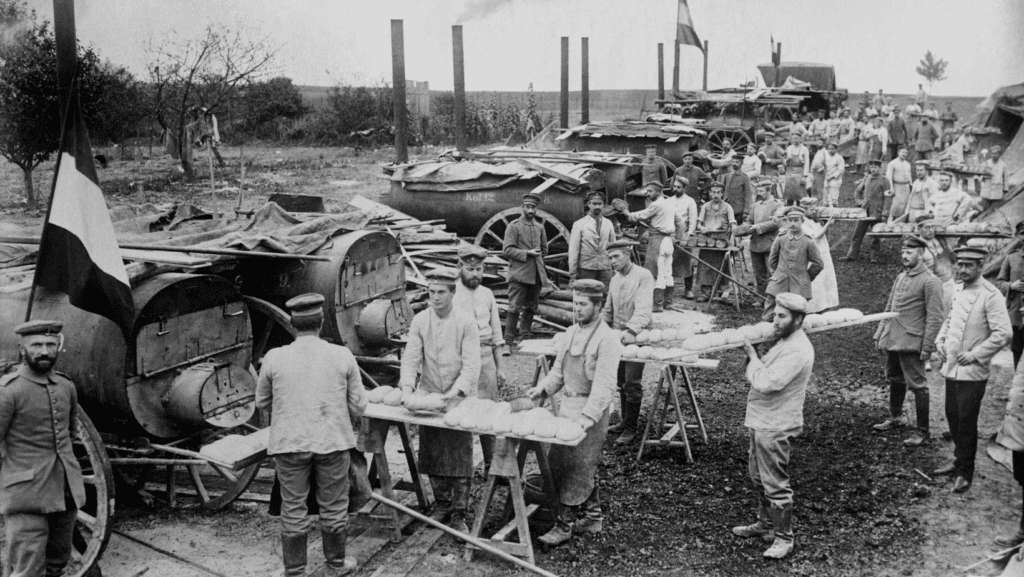
War isn’t all bad... they had field bakeries! Jk. These are German breads being baked in Belgium during the war.
In 1914, Germany invaded Belgium. WWI. To everyone’s surprise, Belgium held their own and gained international fame for it. But not forever. Belgium’s people suffered as an occupied regoin and relied on food shipments from the US to survive.
Then in 1940, Germany again came knocking. With explosives. The Belgians could only hold out for 2 weeks this time. WWII. Belgium had thousands of resistance fighters, again beig the warriors they had become known as.
After the wars, Belgium was sick of all the fighting and called for European unification. So many battles had been fought in little Belgium that it got the nickname “the Battlefield of Europe”.
Belgium then became one of the founding members of NATO. They finally freed Congo, and Central Africa now receives most of Belgium’s foreign development aid (which is overall one of the highest in the world). And now they’re the seat of the EU. Good job, Belgian warriors!
Even though Belgium wanted unification on the outside, internally the south and north of the country remained divided culturally, linguistically, economically and some spite is left over due to histrorical events between the regions. These feelings are tru to this day.
Belgium Languages
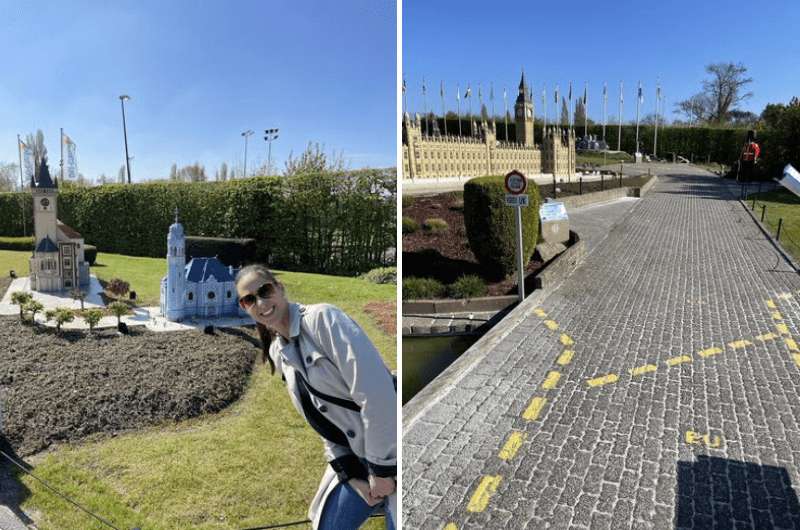
Traveling around Europe in Mini-Europe in Brussels
French, Dutch and German are Belgium’s official languages. In general, the south—Wallonia—is French-speaking, the north—Flanders—is Dutch-speaking (also called Flemish), with the German speakers shoved away on a little smidge of land in the east (neighboring Germany).
Brussels is mainly French-speaking, but officially bilingual, meaning you’ll see signage in both languages everywhere.
Note that both the Dutch and the French spoken by Belgians are not exactly the same as they are in France and the Netherlands, and there are local dialects spoken across the country.
Most everyone you’ll come across, but especially in Brussels, speaks English.
It was very easy communicating in Belgium for us, though when the signage in the museums we visited was only in Dutch or French, we weren’t able to understand diddly-squat. Not a frequent occurrence, but it did happen (like in my personal favorite, the Royal Museum of the Armed Forces and Military History in Brussels). Mostly the museums in Belgium give you a tablet and off you go, choosing one of many languages available to suit everyone’s fancy.
Belgium Weather
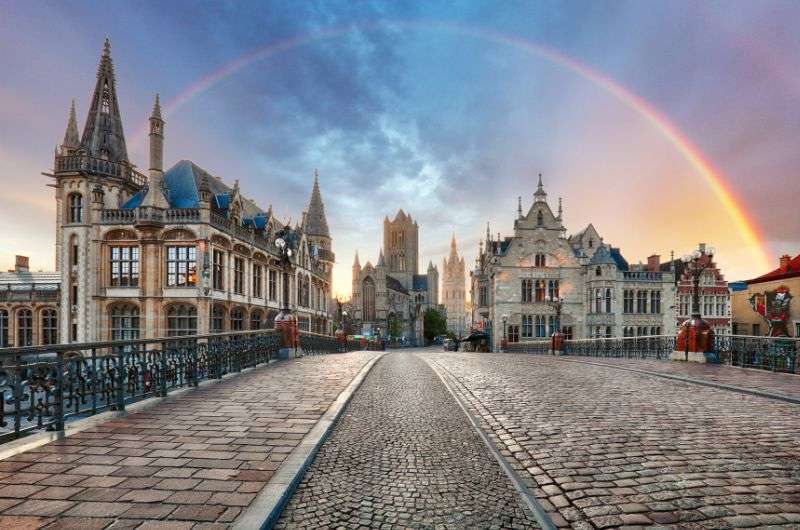
The historical center of Ghent with a rainbow following one of the many drizzles
If you love the rain, you’ll love Belgium. With an average of 200 rainy days per year, your chances of at least a drizzle are pretty high. Rain comes in pretty steady year-round with a slight increase in July and in December and the highest chance of a dry day in the spring (April-ish).
Summers in Belgium are short. Seriously, if you blink you might miss it. It starts in July and is over by August. Average daytime temperatures during Belgian summers are around 25°C.
Winters are foggy with temperatures hovering around 3–7°C, but it’s the damp air that’ll get you. It stays this cold until March. Then again, maybe you’ll find the frozen canals of Ghent and Bruges charming.
And so, I hereby proclaim April to June the best time to visit Belgium. Temperatures gradually rise to a pleasant 15–20°C.
You can find some more information about the weather (and a whole lotta more aspects of travel in Belgium) in our Belgium travel tips article.
Comfy, cool and chic @ Pillows Grand Boutique Hotel Reylof in Ghent
Hotel tip: If you actually do want to see those frozen canals, look into staying at the modern Pillows Grand Boutique Hotel Reylof in Ghent, or the Relais Bourgondisch Cruyce in Bruges that sits right on the canal!
Belgium Money and Prices
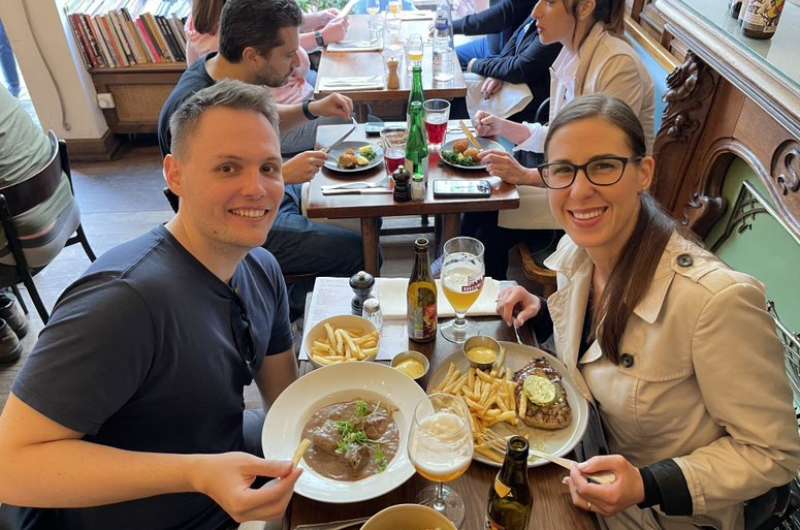
One of our favorite restaurants in Belgium: Nüetnigenough in Brussels. A pint of beer in Belgium is around €5.
Belgium’s currency is the Euro, which finally replaced the Belgian Franc in 2002 after a 3-year transition period during which both currencies were legal tender.
You’d think that the presence of the headquarters of the EU would make Belgium a very expensive country, but it’s in fact not that bad. Neighboring Netherlands, France and Luxembourg are all more expensive, so Belgium comes out looking pretty cheap! Although realistically, it’s still on the expensive side.
Dinner for 2 at a nice restaurant costs €70–80. A pint of beer is around €5. A room in a good 4- or 5-star hotel can cost from €200 to €300.
You can pay by card everywhere except for maybe some tiny shops or souvenir shops. Even on public transportation you can usually pay not only with cards, but also your phone or smart watch.
Belgium Religion
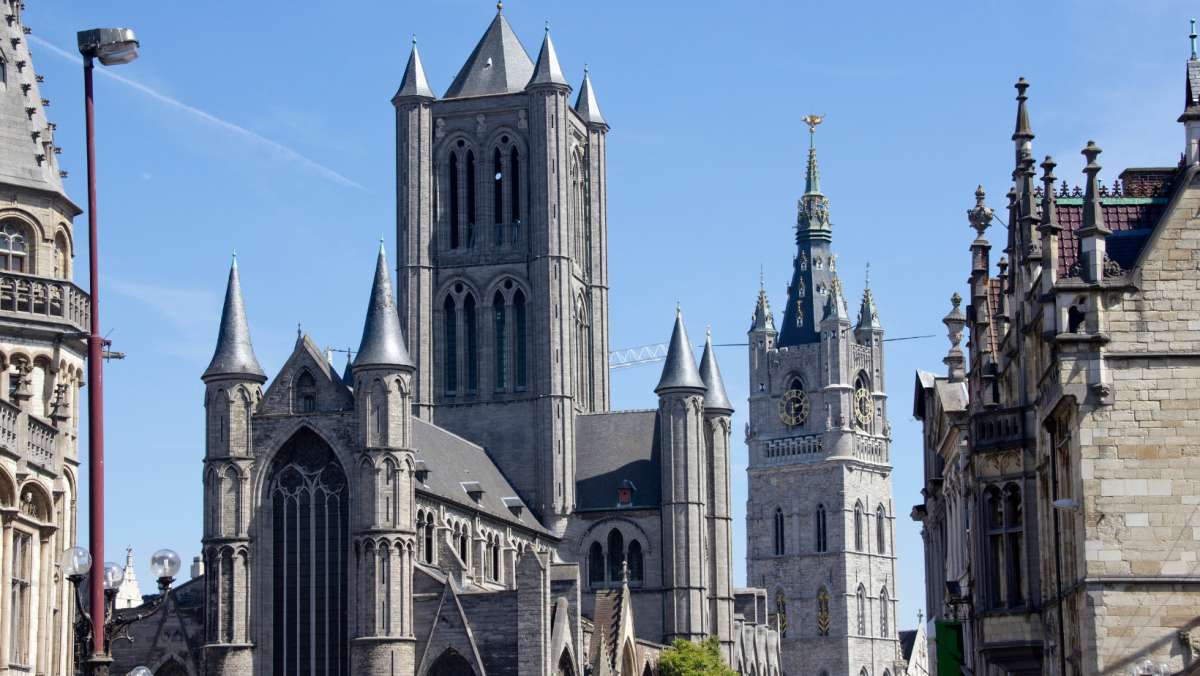
St. Nicholas Church and the Belfry (which has the best view of St. Nicholas Church) in Ghent
Belgium is a secular country.
Christianity is the most popular religion in Belgium, with Roman Catholicism taking first position with about 52% of Belgians adhering to it. About a third of the population of Belgium are non-religious folks, and the rest is a mix of other Christian faiths and other religions.
Most non-religious Belgians hail from Wallonia. I guess their God disappointed them with the steel and coal fiasco and they called it quits with him (her?).
Zen vibes @ Botanic Sanctuary Antwerp
The Jewish community in Antwerp is one of the largest in Europe, with 30 synagogues in Antwerp alone. Stay a night or two in the incredibly zen Botanic Sanctuary Antwerp and see the sights for yourself.
Belgium Culture, Arts and Famous Belgians
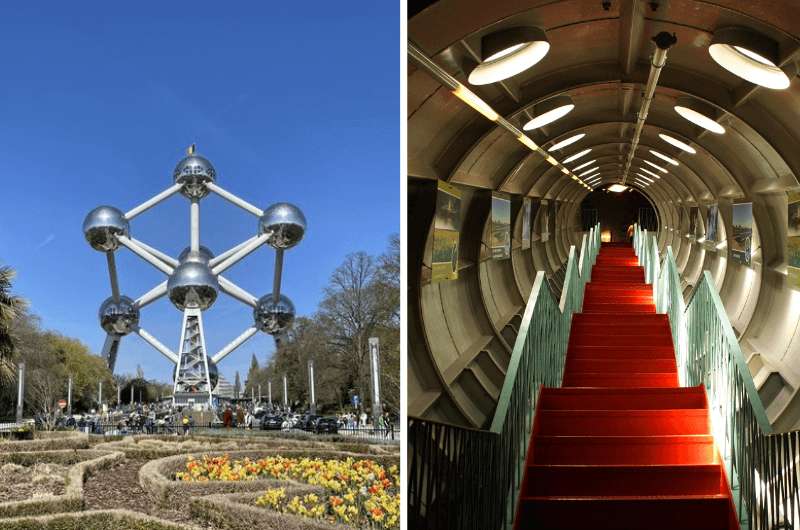
The Atomium was one of our favorite things to see in Brussels
Food is culture, right? See the next section for all about Belgium’s culinary delights, which, in a nutshell, can be classified as comfort food. What’s not to love? Also, beer culture is a thing.
Many famous comics come from Belgium, such as Tin Tin, The Smurfs and Lucky Luke. If you didn’t know this, you’ll be repeatedly reminded of it once you step out of the plane, with comics murals, museums and comics-inspired design in places like hotels and restaurants (and Brussels Airlines airplanes).
There is a Comics Art Museum in Brussels that’ll gladly be your window into the comics world, and the famous Tin Tin mural can’t be missed and is located a few steps away from Belgium’s famous peeing kid fountain, Manneken Pis.
In Charleroi, The Smurfs birthplace, they even have a 2 km-long comic book trail through the city where you can admire sculptures and murals.
Among other artists hailing from Belgium are surrealist artist René Magritte (check out his museums in Brussels), baroque painter Peter Paul Rubens (see his house in Antwerp), the lovely Audrey Hepburn, and “the muscles from Brussels” Jean Claude Van Damme. You probably don’t know the name Adolphe Sax, but if I say he crafted a well-known musical instrument, I think a light bulb will go off. He was from Dinant, which is now adorned by sculptures of said musical instrument.
Perfect location right by the canals of Bruges and a bunch of art? You can have it all @ the Relais Bourgondisch Cruyce
Hotel tip for art lovers: If you like old art, check-in to the Relais Bourgondisch Cruyce in Bruges. The rooms are decorated with the owner’s art and antique collection.
Belgians love their parades and processions and local festivities originating in either religious or mythological stories.
One of the most famous events in Belgium is the Carnival of Binche, held annually on the Sunday, Monday and Tuesday preceding Lent. It is also held in other cities, but the one in Binche, between Mons and Charleroi in Wallonia, is the most significant.
The most visually stunning participants are the Gilles, men and boys wearing traditional costumes, wooden shoes and wax masks. They walk around from the crack of dawn signing traditional songs and basically causing a ruckus in order to ward off evil spirits.
Later in the day they take off their masks and some wear tall hats made of ostrich feathers. This is when they throw oranges around as a symbol of good luck. Smart residents cover their windows for this part of the procession in order to prevent damage. Wait, isn’t broken glass also considered good luck?! There can be around 1000 Gilles roaming around at a time.
Belgian Food and Beer
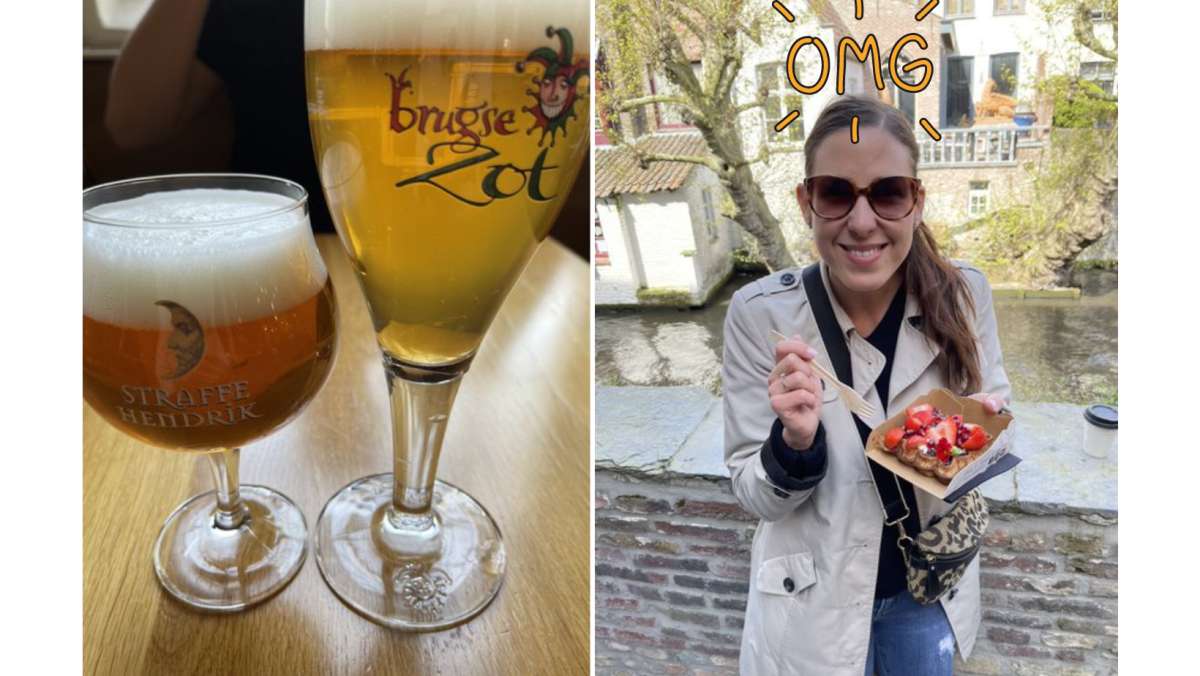
No comment necessary. More about the best Belgian food and drinks (aka beer) here.
Belgium is one of our favorite countries food-wise, and we wrote a whole article just about the food and beer of Belgium, so take a peek over there if you want details on why you can’t call French Fries French and which one of us hates mussels.
Of course when you think Belgium, you think chocolate, you think beer and you probably think fries. I have to say a lot of Belgian food is fried, and whatever isn’t fried at least comes with a side of fries. So what?! It’s good, ok!?
Oh, and waffles. You’ll see waffle houses all over the place, but actually having a great waffle is not easy. See our article about our favorite restaurants in Belgium to find out where you can get the best ones.
Belgium has a spectacular beer culture that we enjoyed very much. Nobody drinks wine in Belgium. Its beer and more beer, everywhere, all the time. Even high-end restaurants pair their dishes with beer instead of wine.
If you think that’s bonkers, visit the Beer Experience Museum in Bruges to educate yourself. You’ll gain a new appreciation of beer that’ll go way past just drinking a pint with your buddies. It’s even on UNESCO’s list of intangible cultural heritage.
Also in Bruges is a unique underground beer pipeline. This innovation allowed the De Halve Maan brewery to stay in the city center when everyone else was building new plants on the outskirts of town.
Useful contacts and emergency vocabulary
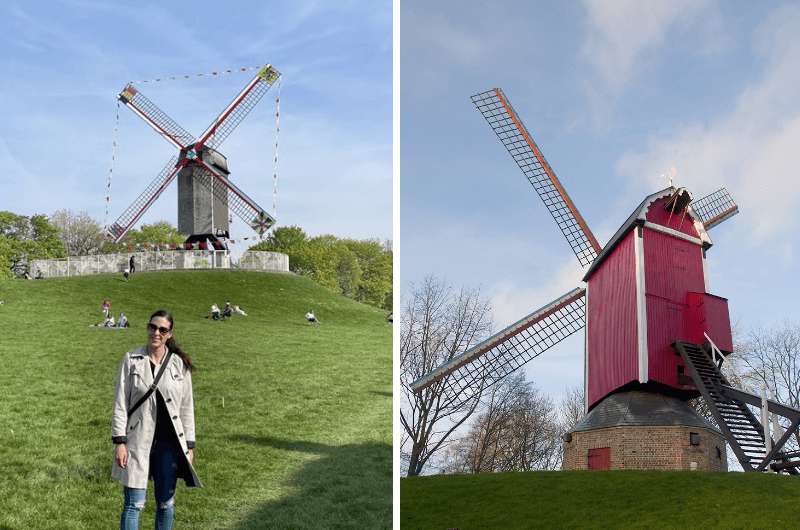
Karin with the windmills of Bruges. They have nothing to do with emergency contacts, but they’re nice, right?
The emergency phone number for Belgium (and all other EU countries) is 112 for medical and fire emergencies. The medical service is called Service médical d’urgence and the fire service is called Pompiers.
To reach the police (police/politie), call 101.
You can reach both numbers for free from any landline or mobile phone. The staff on the line speak English.
An emergency room of a hospital is called les urgences/spoedeisende hulp. To find a pharmacy, look for the green cross sign and the name pharmacie/apotheek.
This is a list of embassies in Belgium.
Hotels in Belgium: recap
Seriously, the Radisson Red in Brussels is calling your name
If you want something classier, try the Rocco Forte Hotel Amigo (also in Brussels)
In Ghent, Pillows Grand Boutique Hotel Reylof is a contemporary option.
You can’t argue with the charm of the Relais Bourgondisch Cruyce in Bruges.
Fifty shades of zen @ Botanic Sanctuary Antwerp
This post may contain affiliate links. We earn a small commission if you make bookings through my links, at no additional cost to you. This helps us keep this blog free, thank you!


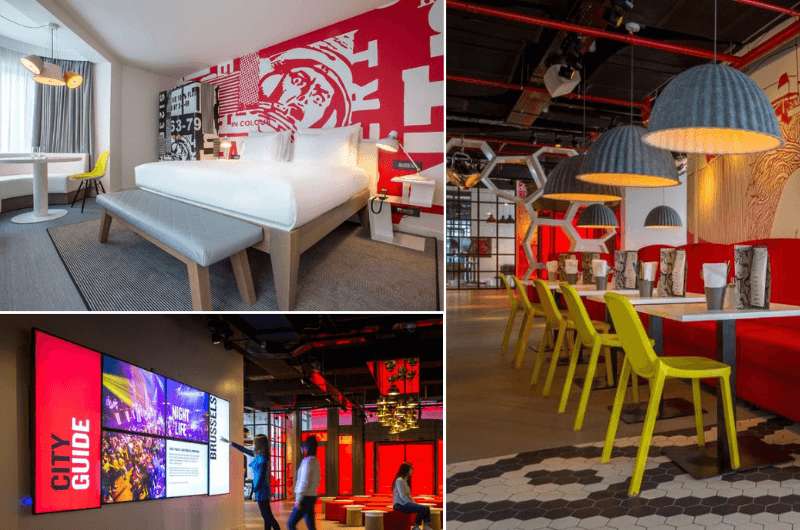
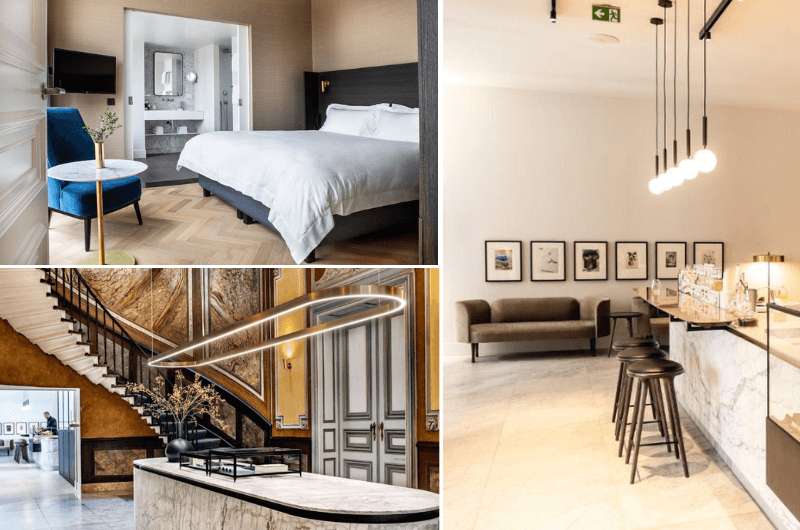
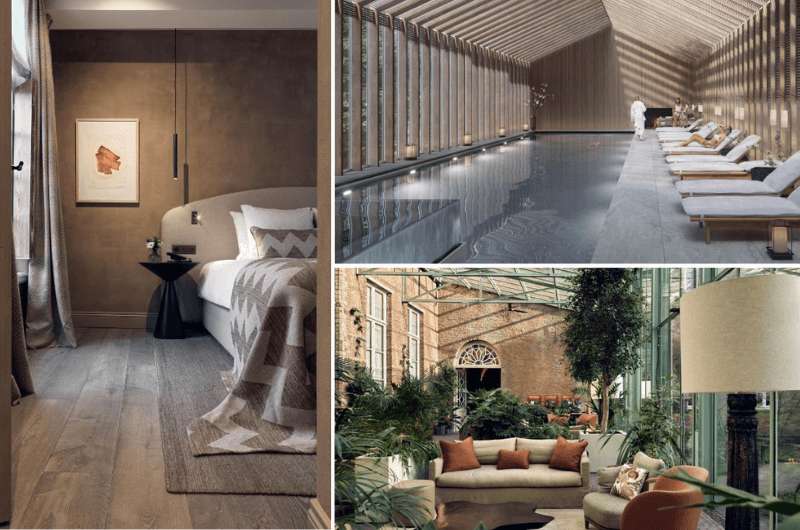
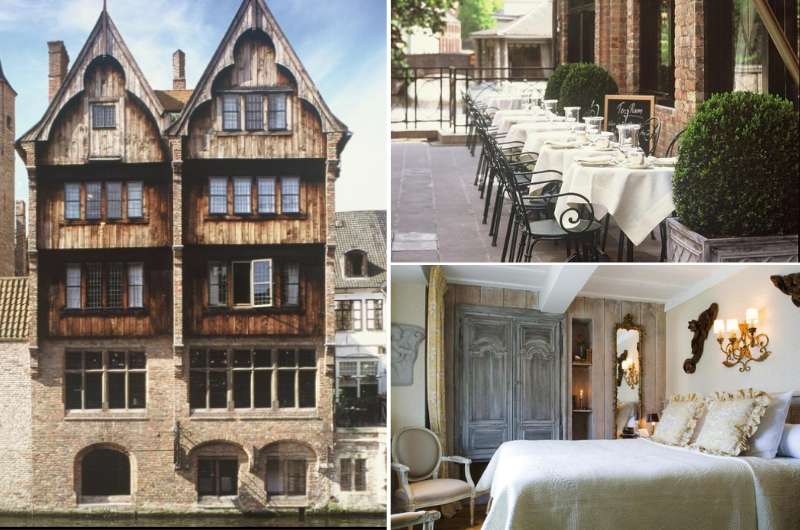
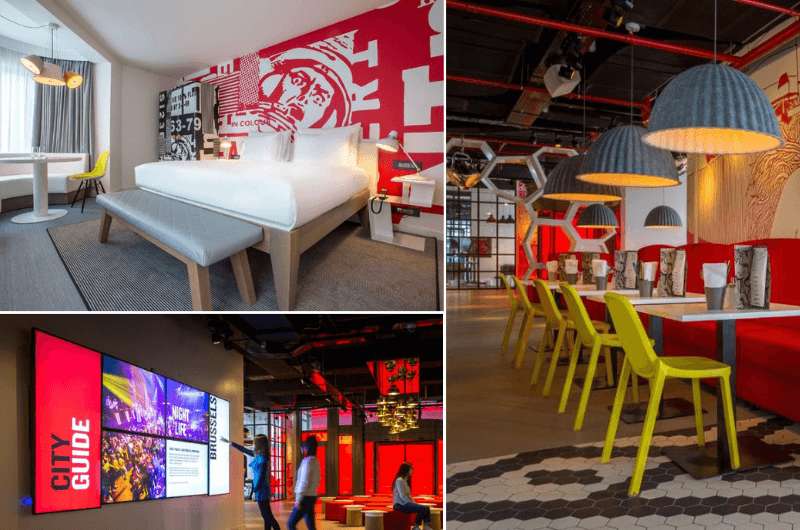
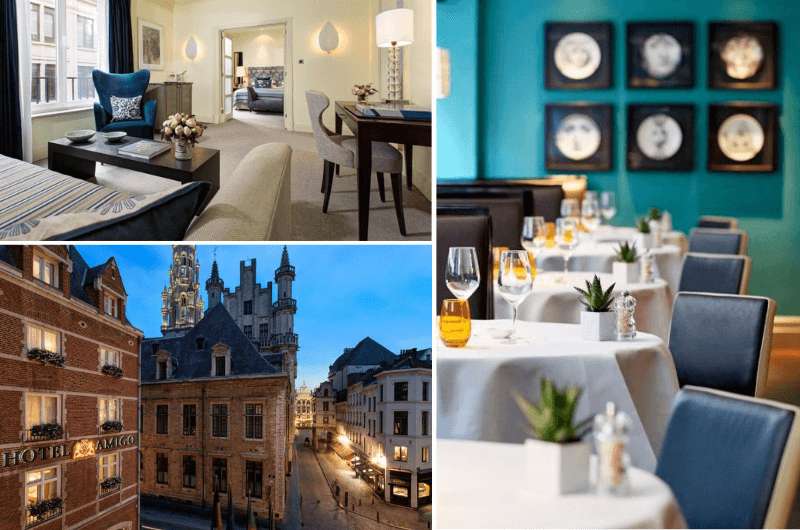
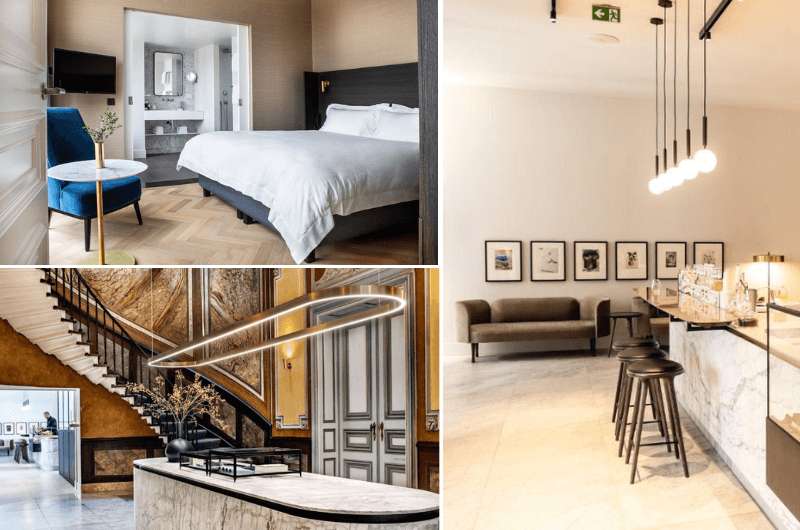
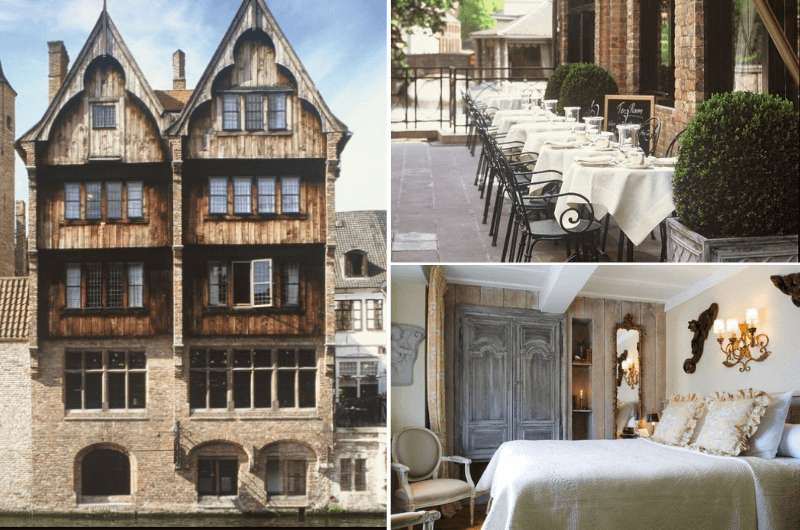
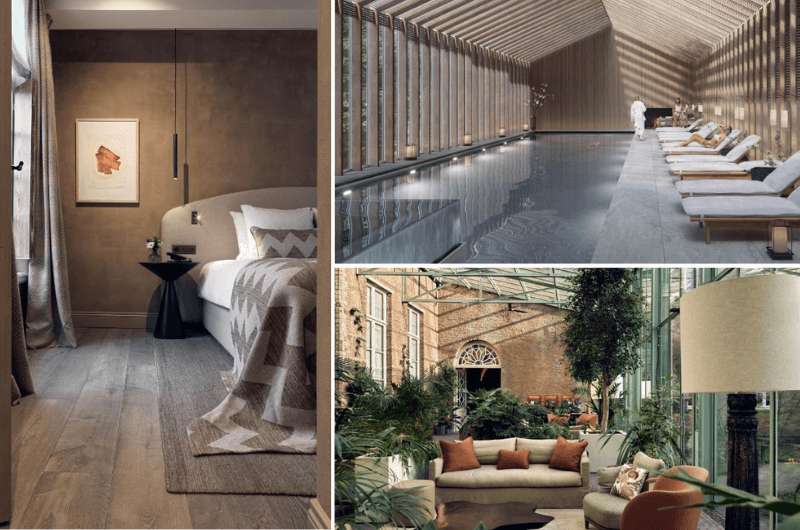
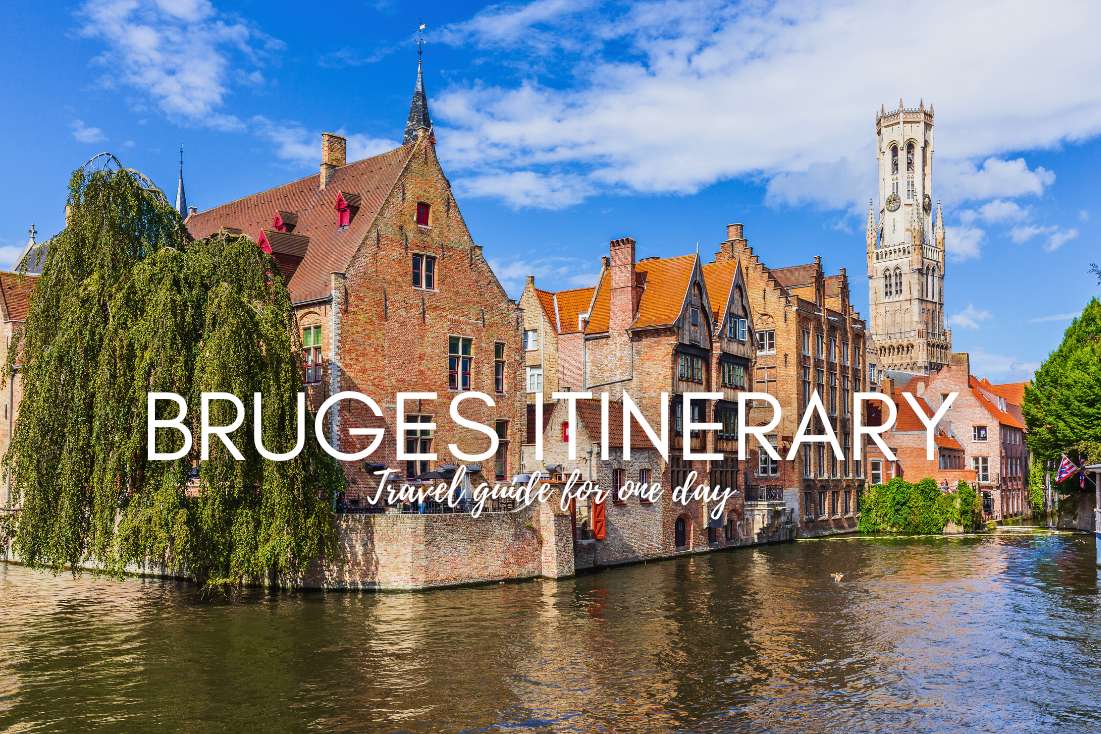
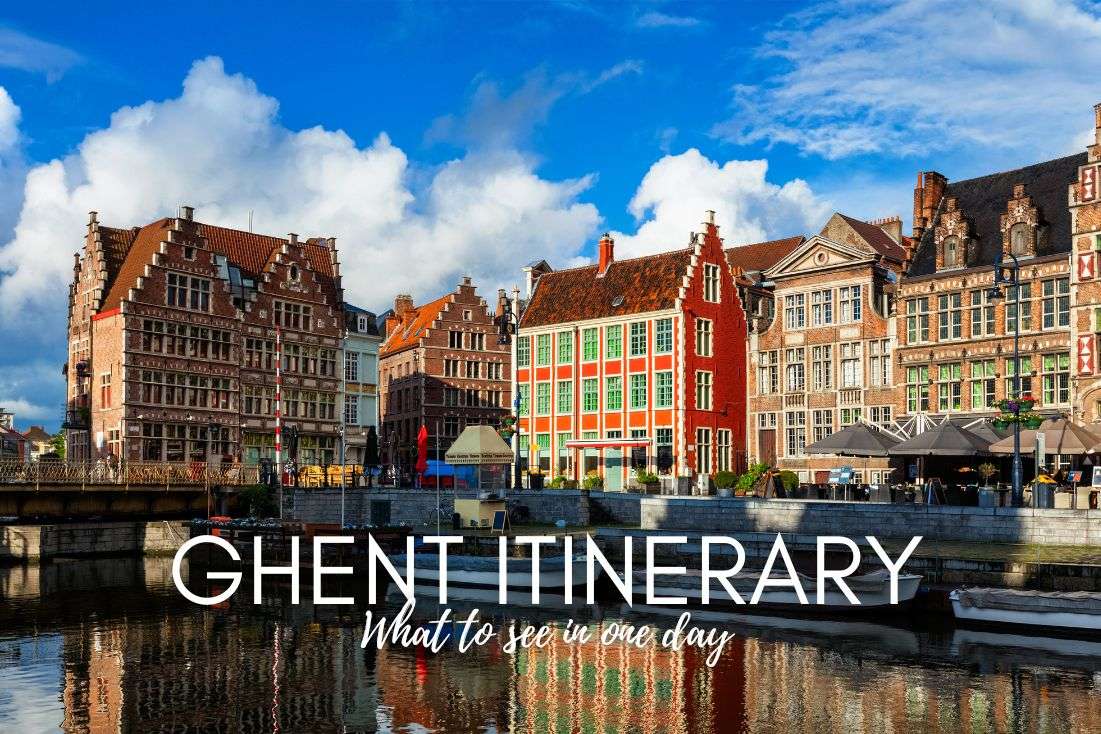
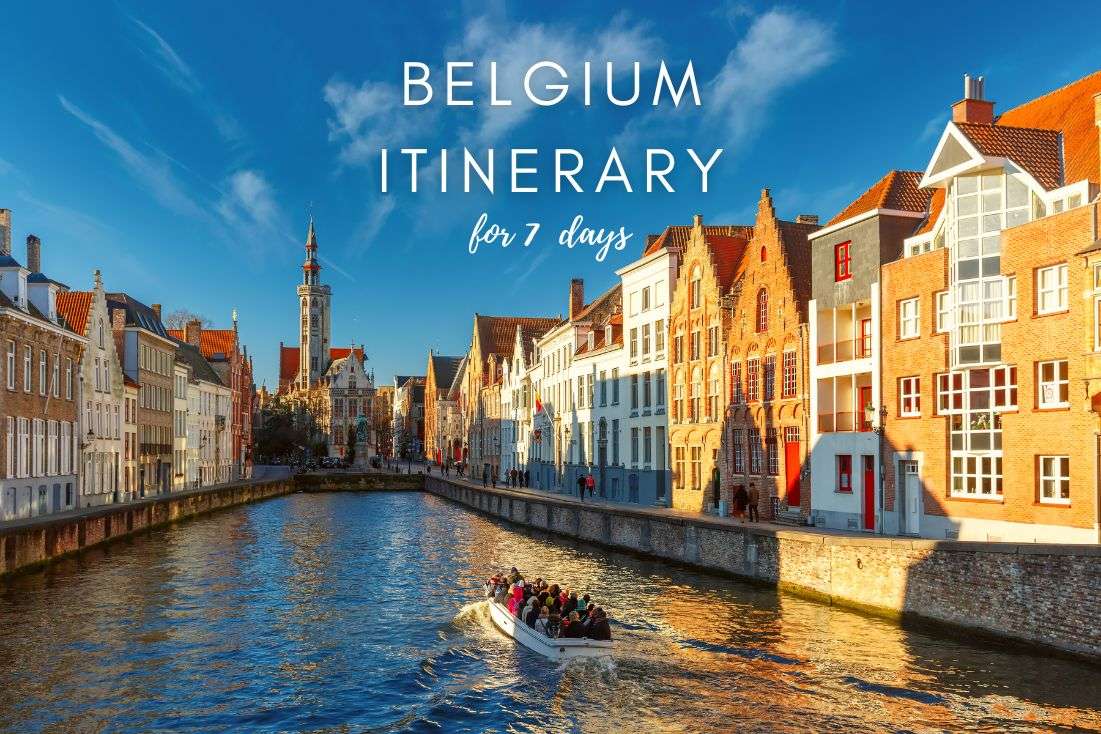





Comments | Thoughts? Give us a shout!